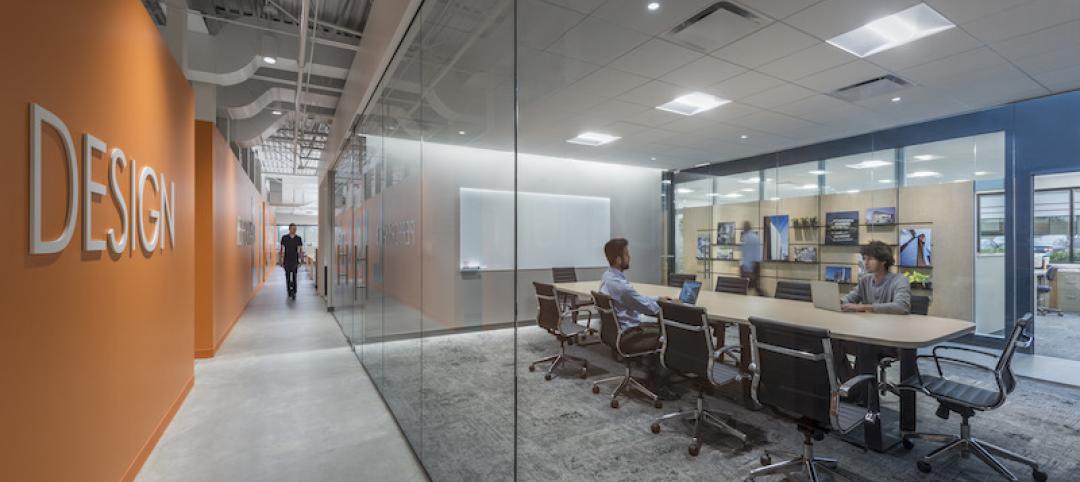|
In 2010, the AIA/NCARB Internship and Career Survey of emerging professionals took a snapshot of young designers during a time ofintense economic contraction, when they were often the first to suffer. But in the two years since, emerging professionals have begun experiencing a rebound, with higher employment levels, more young designers getting licensed, and any remaining unemployment becoming, in most cases, mercifully short. The 2012 Internship and Career Survey, commissioned jointly by the AIA and NCARB, and conducted by The Rickinson Group, contains a wealth of information on the experiences of emerging professionals as they go through IDP, take the ARE, become licensed, and obtain their first jobs. This survey has been completed five times since 2003, most recently inthe fourth quarter of 2012. Path to licensure: IDP and ARE The survey found that there has been little change in the length of time required to complete IDP over the last five years, with nearly two-thirds of respondents (62 percent) in 2012 reporting that it took them three to five years to complete. In addition, the majority of interns who have not yet completed IDP anticipate that it will take the same amount of time (55 percent). Twenty percent of those who haven’t yet started IDP think it will take them less than three years to complete; in contrast, only 13 of those who have already completed IDP reported that it took less than three years to complete. And just over half of respondents said that they were able to complete all 17 NCARB experience-area requirements at one firm, up 4 percentage points from 2010 and up 8 percentage points from 2005. Nearly 60 percent of survey respondents indicated that they have taken at least some divisions of the ARE, with the most commonly cited motivations for taking the exam being career enhancement (83 percent), personal goal fulfillment (80 percent), competitive advantage in the down economy (63 percent), and a slim majority citing competitive advantage in their firm. Forty percent of interns currently taking the ARE are taking it concurrently with IDP, an increase of 3 percentage points from 2010. In addition, female and younger interns are also more likely to be taking the two concurrently, as are interns on a traditional career path. Just over two-thirds of interns anticipate that it will take them one to four years to complete the ARE, comparable to the share of respondents who reported that it did indeed take that long. For the 41 percent of respondents who have not yet started or do not plan to ever take the ARE, the most commonly cited reasons for not doing so were a lack of time to prepare (56 percent) and cost (54 percent). Seven in 10 survey respondents reported that they intend to become licensed. This is down substantially from 2010, when 83 percent indicated that they planned to obtain licensure, because a larger share of interns are already licensed. (Twenty-five percent of interns were licensed in 2012, as compared to only 11 percent in 2010). The share of respondents who say that they do not intend to become licensed is unchanged from previous editions of the survey, at just 5 percent. Employment levels rising As in past versions of the survey, the vast majority of respondents in 2012 reported that they have already sought their first professional architecture position. And more than three quarters of respondents (78 percent) reported that they were currently engaged in professional architecture work, a notable 8 percent increase from 2010. In addition, just 6 percent reported that they were not currently employed, in contrast to 17 percent two years ago. Respondents also rated the many factors that went into selection of their place of employment, with the top three consisting of opportunities for growth (rated as important by 76 percent of respondents), location, and level of responsibility. Personal/family considerations were more important to respondents who were over 30, while location and reputation of the firm were more important to recently licensed architects. For respondents not currently working in a professional architecture position, the top two reasons were that they were laid off from their previous job (36 percent) and that the path to licensure is too long/difficult (35 percent). While just over half of respondents indicated that they have been laid off in the past, the duration of unemployment after the layoff has declined dramatically in the last two years. In 2010, only 52 percent were able to find a new job in a year or less; last year 64 percent reported that unemployment lasted 12 months or less. Just 14 percent said that they still haven’t found another job, less than half of the rate from two years ago. In addition, nearly seven in 10 respondents who left positions due to layoffs or other economic concerns think they are likely to remain in the architecture profession. Many firms offer interns support as they work to complete the ARE. The most common services include a firm-maintained library of study materials, firm payment of ARE fees, and paid time off to take the ARE. Approximately one-third of firms offer at least one of each. The vast majority of interns think that paid ARE fees are important forms of monetary support their firm can provide, along with a raise upon licensure, and paid professional organization dues. Overall, the most effective incentives to becoming registered are a salary increase, a bonus upon registration, and a bonus upon completion of the ARE. While 60 percent of respondents rated compensation as worse than they had anticipated, the majority has found that professional satisfaction with work, the type of work they’re doing, and hours worked are the same as or better than they had expected. This survey received 10,003 usable responses; 41 percent of respondents were women, 37 percent under age 30, and an additional 29 percent between ages 30–34. |
||
(http://www.aia.org/practicing/AIAB098254?mid=1298826&rid=14899235&cid=ITTestCampaign&sid=LyrisListManager&lid=aiarchitect-nonmembers)
Related Stories
Sponsored | Designers | Oct 18, 2017
Universal design principles: Part 2
The CDC targets the bathroom as the most dangerous room in the house. Architects can use principles of Universal Design (UD) to reduce these hazards.
Giants 400 | Oct 17, 2017
Top 110 office architecture firms
Gensler, Jacobs, and HOK top BD+C’s ranking of the nation’s largest office sector architecture and AE firms, as reported in the 2017 Giants 300 Report.
Giants 400 | Oct 16, 2017
Data center market forecast: Clearly cloudy
Look for mission-critical construction to double in the next few years.
Resiliency | Oct 13, 2017
Resiliency takes center stage in new projects around the country
Projects like these, where resilience is central to their design and construction, are becoming more commonplace.
Architects | Oct 11, 2017
Architects to policymakers: Buildings are infrastructure, too
Left out of this ongoing national debate over infrastructure are the nation’s other public buildings: the libraries, community centers, courthouses, community college buildings, affordable housing developments, and justice facilities.
Giants 400 | Oct 11, 2017
Top 25 data center architecture firms
Jacobs, Corgan, and Gensler top BD+C’s ranking of the nation’s largest data center sector architecture and AE firms, as reported in the 2017 Giants 300 Report.
Multifamily Housing | Oct 9, 2017
6 new products for the multifamily construction market
Bamboo wall panels, an adaptable prep sink, and a two-tiered bike parking system are among the product innovations geared for multifamily buildings.
AEC Tech | Oct 6, 2017
How professional bias can sabotage industry transformation
Professional bias can take the form of change-resistant thinking that can keep transformational or innovative ambitions at bay. Tech consultant Nate Miller presents three kinds of bias that often emerge when a professional is confronted with new technology.
Giants 400 | Oct 6, 2017
Top 90 K-12 architecture firms
Stantec, DLR Group, and PBK top BD+C’s ranking of the nation’s largest K-12 sector architecture and AE firms, as reported in the 2017 Giants 300 Report.
Giants 400 | Oct 5, 2017
On wings of gold: Alternative financing schemes are propelling the high-flyin’ air terminals sector
The $4 billion renovation of New York City’s LaGuardia Airport is the first major U.S. aviation project delivered using a public-private partnership (P3) model.



















